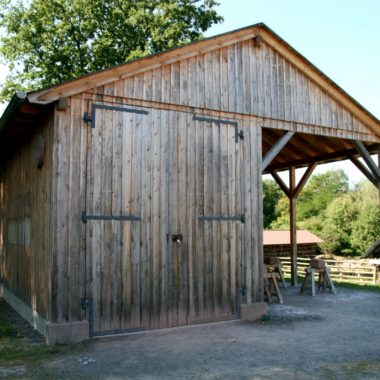
Stone Mason

Wherever stone had to be brought into shape for masonry or artistic decoration, the stone mason or stone carver was called for. The stone mason also made the material that the builder needed for putting up walls. There was a good deal of overlap in the activities of the mason and the carver, particularly in the countryside. The work included cutting blocks of stone from the quarry, breaking up the raw blocks to the desired size using wedges, transporting the stones and finally finishing them.
The tools of the trade included axes, hammers, mallets, chisels and drove chisels. Carpenter’s squares, measuring sticks, tacks and dividers were used to measure the stone blocks and parts. The products made by the stone mason and stone carver included all work on natural stone. For houses, these were building blocks, jambs, lintels, tiles, oven plinths, guard stones, troughs, sinks, and fence posts. In addition, they made field rollers, grindstones, millstones, boundary and way markers, wayside shrines, gravestones, resting benches and conciliation crosses. Masons marked their work with their individual signs to show it was their original creation.
In the course of the 19th century, new materials, such as concrete, increasingly replaced labour-intensive and expensive natural stone in building. Today’s stone masons mainly work in the fields of restoration of building parts and old buildings as well as in the production of gravestones.

Mit dem Laden der Karte akzeptieren Sie die Datenschutzerklärung von Google.
Mehr erfahren
More links





